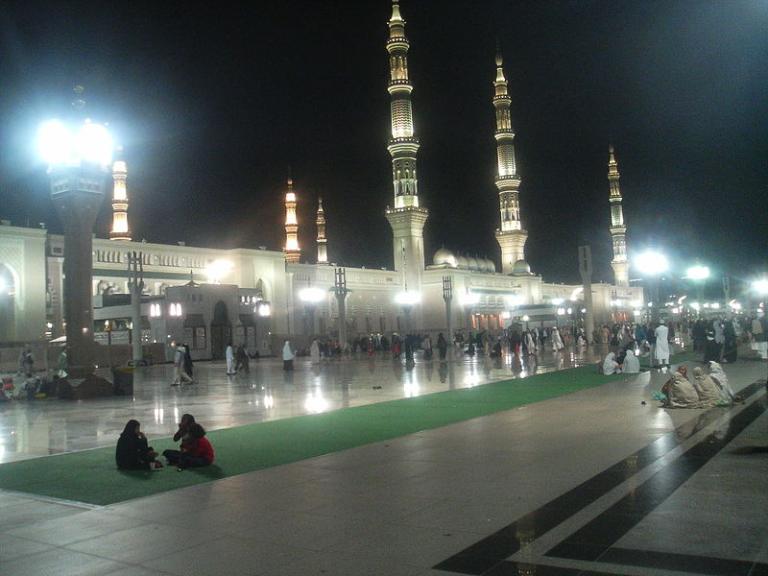
Continuing with one of the manuscripts:
It would be wrong, however, to suggest that the old power and beauty had gone out of the Qur’an by the Medinan period. Passages like the so-called “Light Verse,” which some modern commentators believe refers to the lighted altar of a seventh-century Christian church, conclusively demonstrate that this was not so:
God is the Light of the heavens and the earth;
the likeness of His Light is as a niche
wherein is a lamp
(the lamp in a glass,
the glass as it were a glittering star)
kindled from a Blessed Tree,
an olive that is neither of the East nor of the West
whose oil well-nigh would shine, even if no fire touched it;
Light upon Light;
(God guides to His Light whom He will.)[1]
Nevertheless, Muhammad’s transformation from prophet to prophet-statesman had profound consequences for the nature of the religion that was developing—Islam. This is because the nature of his example to the Muslims changed along with his change of role. Christians who want an ideal model to follow naturally look to Jesus of Nazareth as the person who most perfectly embodies their faith. But Jesus never held any political office or exercised any state power, and this fact allows Christians to concentrate on personal salvation and holiness without fearing that a failure to be politically involved jeopardizes their salvation. Muhammad, on the other hand, presided for the last ten years of his life over a community and attempted to enact Islam into law and political practice. A Muslim who seeks the ideal model for his faith naturally turns to Muhammad as the man who best understood and embodied it—and Muhammad was a statesman. Therefore, a pious Muslim cannot be indifferent to politics.
This is one of the reasons for the political tinge to Islam that so infuriates or frightens or, at least, puzzles Westerners. We should not, however, be so puzzled. During the seventh century, nobody anywhere, in Mecca or in Constantinople or in Rome, had a very firm notion of or commitment to the separation of church and state. We should not be surprised, then, that Islam does not. And, in a religion whose source of authority is firmly in the past, it is exceedingly difficult to evolve beyond seventh-century positions on the subject.
And what of Yathrib? Why do we not hear of that important town today? In fact, we do. After the arrival of the Prophet, the old name of the town gradually fell into disuse. Instead, it began to be known as Madinat al-Nabi, “the city of the Prophet,” or, simply, as al-Madina, “the City” And today Medina (as it is generally spelled in English) has come to be regarded as, after Mecca itself, the most holy city of Islam. (Jerusalem, most frequently known in Arabic as al-Quds, “the holy,” or as Bayt al-Maqdis, “the Holy House”–probably referring to the temple–is the third.)
[1] 24:35; Arberry.











